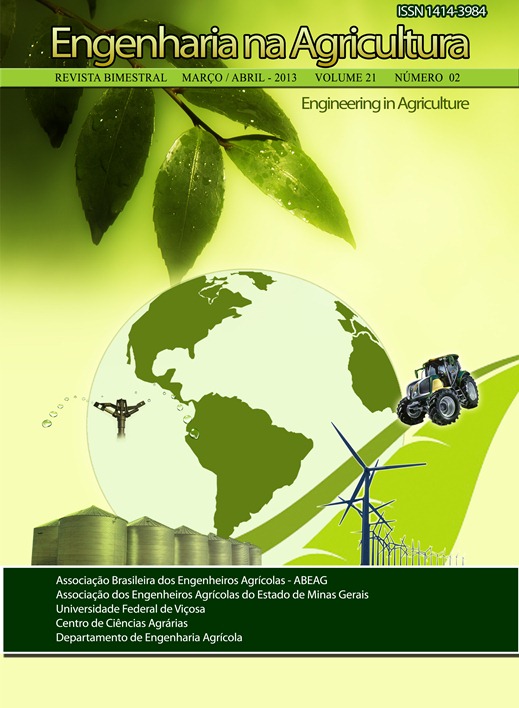AGRONOMIC PERFORMANCE AND NUTRITIONAL STATUS OF MOMBASA GRASS FERTIGATED WITH TANNERY WASTEWATER
DOI:
https://doi.org/10.13083/reveng.v21i2.347Keywords:
curtumes, crômio, forrageiraAbstract
The objective of this study was to assess the productivity and nutritional status of Mombasa grass (Panicum maximum cv. Mombasa) when fertigated with the application of different doses of tannery wastewater (ARC). Based on the chemical composition of the wastewater, the following ARC application rates were established: T1: 0; T2: 1.5; T3: 3.0; T4: 5.0; T5: 10 and T6: 15 kg ha-1 of chromium. According to the results obtained, it was concluded that the application of wastewater was responsible for the increased crude protein content of grass in the first two cuts and also the dry matter yield. Both the productivity of dry matter as well as crude protein were higher in cut 2, where the highest values were estimated when applying the doses of 9.02 kg ha-1 of Cr (2,734 m3 ha-1 ARC) and 10.08 kg ha-1 of Cr (3,055 m3 ha-1 ARC), respectively. Increase in the ARC dose resulted in decreasing potassium concentrations and increases in sodium in the leaves of Mombasa grass. In relation to the behavior of chromium metal, no influence of the treatments was observed on its concentration in the leaves of Mombasa grass. In the specific case of the wastewater studied, because a large NaCl content is used for salting the skins, the increase in sodium concentrations in the plants is apparently a larger problem than that resulting from chromium.Downloads
Downloads
Published
How to Cite
Issue
Section
License
Authors who publish with this journal agree to the following terms:
The author(s) authorize(s) the publication of the text in the journal;
The author(s) ensure(s) that the contribution is original and unpublished and that it is not in the process of evaluation by another journal;
The journal is not responsible for the views, ideas and concepts presented in articles, and these are the sole responsibility of the author(s);
The publishers reserve the right to make textual adjustments and adapt texts to meet with publication standards.
From submission, the author is fully conceding the paper's patrimonial rights to the publication, but retaining the owner of its moral rights (authorship and paper's identification) according to Creative Commons Attribution-Noncommercial.








 Licensed by
Licensed by 